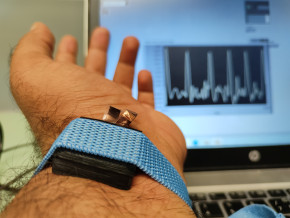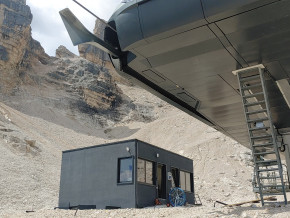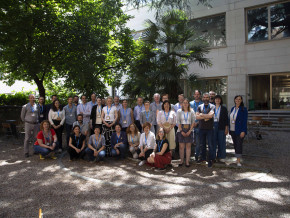84 cents
Sexism is likely to be the most important driver of the gender wage gap. Prof. Steven Stillman analyzed 10 years of data on all New Zealand workers and firms to examine why women earn less than men with similar qualifications in most countries.
It is well established that women earn less than men with similar qualifications in most countries. This is true in New Zealand and other OECD countries, but exactly why it is the case is less clear.
In our research, we used wage data and productivity data from the whole of New Zealand to look at the reasons for the gender wage gap. We found that sexism is likely to be the most important driver of the gender wage gap, rather than women working in low-paying industries or firms, being less productive, or being less successful at bargaining. When comparing men and women in the same industry, we found they were statistically indistinguishable in how much value they added to their firms. Yet, for work of the same value the average woman in the private for-profit sector was paid only 84 cents for every $1 paid to the average man.
Our research is based on comprehensive data sets derived from administrative data on both employees and their employers for the whole of the economy. These data gave us many insights into the operation of New Zealand's labour market and were instrumental in our examination of productivity and the gender wage gap.
We began by looking at data on the working population in New Zealand between 2001 and 2011 to see how much of the overall gap between women and men’s wages occurs because women work in industries that pay less.
When we compared this with relative wages, we found a 16% gender wage gap, meaning women are paid 16% less for making a contribution of the same value to their employer.
We found that women are over-represented in low-paying industries such as food and beverage services and aged care, but that this explains only 7% of the entire gender wage gap. If you add the fact that women also tend to work in low-paying firms, we find that 12% of the overall gender wage gap is due to the particular industries and firms where women work.
We then looked at productivity and wages of men and women in private for-profit firms with at least five employees. We looked directly at how the output of similar firms varies with the gender mix of the employees, and used this to infer the relative value male and female employees add to their firms.
When we compared this with relative wages, we found a 16% gender wage gap, meaning women are paid 16% less for making a contribution of the same value to their employer. There was no evidence that young women are paid less than young men for work of the same value, but there was a 16% pay gap for women aged 25-39, a 21% gap for those aged 40-54, and a 49% gap for older women.
Next we explored the potential causes of the gender wage gap that is not explained by differences in productivity. One possibility is that employers could stereotype women as being less productive than men, and pay them commensurately with their value only once they’d had a chance to demonstrate their productivity. This is known as statistical discrimination. If statistical discrimination were driving the unexplained gender wage gap, women with more labour market experience or more years with the same employer, and thus more opportunity to demonstrate their productivity, would be paid similarly to equally productive men.
Our research shows women in their first year with their employer are not paid significantly less than equally productive men in their first year. However, in their second and subsequent years women are paid over 20% less. Similarly, the unexplained gap is greater among older age groups. That is, women who have had the chance to demonstrate their worth to their employers nevertheless face a larger wage-productivity gap.
This is the opposite to what we’d expect under statistical discrimination, which suggests that the gender wage-productivity gap is primarily driven by something else.
We then looked systematically at how the gap varied across industries and time periods that differed in terms of worker skill level, firm competition, and difficulty hiring. We found a large gap where workers are highly skilled and firms face low competition. The gap is larger when firms find it easy to hire skilled workers.
If women are less confident than men at bargaining with their employers for higher wages, women may end up getting paid less to do the same work, even if employers are not prejudiced against women. Bargaining is expected to be more important when the labour market is tight and prospective employees have better alternatives if they turn down a job. Since this is the opposite of what we find, our results suggest that sexism is likely to be more important for explaining why on average women earn less than men in New Zealand.
New Zealand is a small open economy with a gender wage gap similar to the US and many European countries. It has a highly flexible labor market with low rates of unionization and centralized bargaining, high female employment rates, and the economy is strongly dominated by the service sector. In many ways, New Zealand can be seen as leader in the increased reliance on international trade and reduced employment in manufacturing and routine task-intensive activities that is currently happening in most OECD countries.
These characteristics of the New Zealand labor market should favor women in many ways. Hence, our finding that sexism persists in many sectors of the economy is discouraging and suggests that stronger enforcement of equal pay regulations could be beneficial for many women. It also seems quite likely that similar situations exist in the majority of OECD countries, which have less flexible labor markets or a slower shift towards the service sector.
The complete research paper can be found here
Related Articles

Tecno-prodotti. Creati nuovi sensori triboelettrici nel laboratorio di sensoristica al NOI Techpark
I wearable sono dispositivi ormai imprescindibili nel settore sanitario e sportivo: un mercato in crescita a livello globale che ha bisogno di fonti di energia alternative e sensori affidabili, economici e sostenibili. Il laboratorio Sensing Technologies Lab della Libera Università di Bolzano (unibz) al Parco Tecnologico NOI Techpark ha realizzato un prototipo di dispositivo indossabile autoalimentato che soddisfa tutti questi requisiti. Un progetto nato grazie alla collaborazione con il Center for Sensing Solutions di Eurac Research e l’Advanced Technology Institute dell’Università del Surrey.

unibz forscht an technologischen Lösungen zur Erhaltung des Permafrostes in den Dolomiten
Wie kann brüchig gewordener Boden in den Dolomiten gekühlt und damit gesichert werden? Am Samstag, den 9. September fand in Cortina d'Ampezzo an der Bergstation der Sesselbahn Pian Ra Valles Bus Tofana die Präsentation des Projekts „Rescue Permafrost " statt. Ein Projekt, das in Zusammenarbeit mit Fachleuten für nachhaltiges Design, darunter einem Forschungsteam für Umweltphysik der unibz, entwickelt wurde. Das gemeinsame Ziel: das gefährliche Auftauen des Permafrosts zu verhindern, ein Phänomen, das aufgrund des globalen Klimawandels immer öfter auftritt. Die Freie Universität Bozen hat nun im Rahmen des Forschungsprojekts eine erste dynamische Analyse der Auswirkungen einer technologischen Lösung zur Kühlung der Bodentemperatur durchgeführt.

Gesunde Böden dank Partizipation der Bevölkerung: unibz koordiniert Citizen-Science-Projekt ECHO
Die Citizen-Science-Initiative „ECHO - Engaging Citizens in soil science: the road to Healthier Soils" zielt darauf ab, das Wissen und das Bewusstsein der EU-Bürger:innen für die Bodengesundheit über deren aktive Einbeziehung in das Projekt zu verbessern. Mit 16 Teilnehmern aus ganz Europa - 10 führenden Universitäten und Forschungszentren, 4 KMU und 2 Stiftungen - wird ECHO 16.500 Standorte in verschiedenen klimatischen und biogeografischen Regionen bewerten, um seine ehrgeizigen Ziele zu erreichen.

Erstversorgung: Drohnen machen den Unterschied
Die Ergebnisse einer Studie von Eurac Research und der Bergrettung Südtirol liegen vor.
